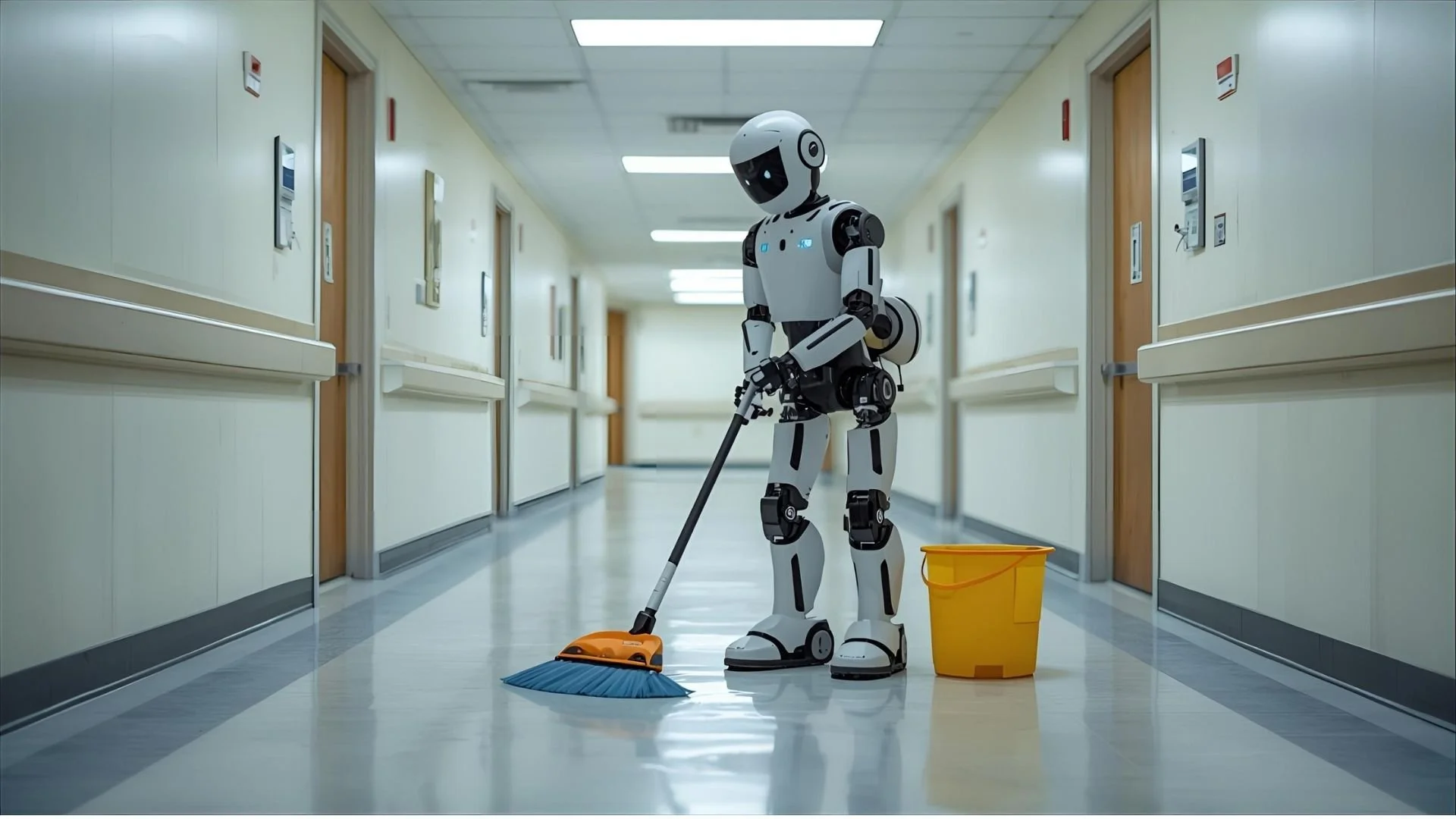HAIs: Culture, Compliance and the Cost Curve
By Arunima Rajan
IPC has shifted from support function to strategic corner stone, driven by AMR, patient expectations and accreditation.
Hospital-acquired infections (HAIs) are infections that patients develop within 48 hours of being admitted to a healthcare facility. These infections often occur due to invasive procedures or unsafe hospital environments.
Dr Akshay Dongardive, National President Federation of All India Medical Association.
“When a patient acquires such a secondary infection, their recovery is delayed, the hospital stay becomes longer, and the overall cost of treatment increases. The good news is that most HAIs are preventable. Simple measures like proper hand hygiene, using safe and sterile devices, and isolating infected patients can significantly reduce the risk. Certain groups of patients are more vulnerable—such as those who undergo surgery, have catheters or IV lines, are immunocompromised, or require prolonged hospitalisation. Healthcare workers are also at risk of contracting and spreading these infections. That’s why they must strictly follow personal protective practices, including handwashing, wearing masks, gloves, and gowns, handling sharps with care, and ensure proper biomedical waste disposal. To ensure these practices are followed, every hospital should have a Hospital Infection Control Committee (HICC). This committee plays a key role in supervising infection control measures, evaluating existing practices, and training staff regularly to maintain safe standards of care. Ultimately, something as basic as good hygiene can prevent many serious infections and save lives,” says Dr Akshay Dongardive, National President Federation of All India Medical Association.
IPC becomes Strategic
Dr. Sweta Shah is lead Consultant, microbiology and infection prevention at Kokilaben Dhirubhai Ambani Hospital Mumbai .She notes that infection Prevention and Control (IPC) has evolved from a supportive hospital function into a cornerstone of modern healthcare delivery. “It safeguards both patients and healthcare personnel by minimising healthcare-associated infections (HAIs) and ensuring safe clinical outcomes. The increasing threat of antimicrobial resistance (AMR), rising patient expectations, and regulatory emphasis from agencies such as the National Accreditation Board for Hospitals (NABH) have amplified the strategic relevance of IPC. Although accreditation remains voluntary in India, it plays a critical role in building patient confidence, standardizing care processes, and driving hospitals toward measurable quality improvement. Infection control indicators form an integral component of these continuous monitoring and benchmarking systems.
AMR and Urgent Data Alarm
The rising burden of multidrug-resistant organisms (MDROs) poses an unprecedented challenge to both hospital and community healthcare systems. Data from the Indian Council of Medical Research (ICMR) reported that 20–60% of hospital-acquired infections caused by Escherichia coli, Klebsiella spp., Pseudomonas spp., and Acinetobacter spp. demonstrate resistance to carbapenems, including meropenem. These findings align with global surveillance trends and underscore the urgency of integrating IPC within broader AMR containment frameworks. AMR contributes to increased antimicrobial consumption, prolonged hospitalization, higher healthcare costs, and poor clinical outcomes. The need to decrease HAI and contain AMR has led to rise in infection control emphasis in hospitals,” she explains.
Tech Can Help-But Behaviour Matters More
Dr. Abdul Ghafur, is a senior consultant, infectious diseases, Apollo Hospitals, Chennai. “Hospital-acquired infections are a major cause of morbidity and mortality, yet rigorous hand hygiene alone can reduce them by half. Every healthcare worker and visitor holds a crucial role in safeguarding our patients,” adds Ghafur.
He also points out that there are several advanced technologies now available in infection control -from UV-C disinfection robots and antimicrobial surface coatings to artificial intelligence-based surveillance systems and air purification technologies using HEPA filters and UV-C light. “These innovations have greatly strengthened our ability to prevent hospital-acquired infections. But despite all these advances, hand hygiene remains the single most important measure. Without proper hand hygiene, even the most sophisticated infection-control technologies lose their effectiveness,” he adds.
He points out that high-quality hospitals have long maintained robust infection control departments and well-established protocols. However, the COVID-19 pandemic significantly heightened awareness of infection prevention across the healthcare sector. As a result, even mid-sized and smaller institutions have begun implementing structured infection control measures. Furthermore, the mandatory infection control standards required for NABH and Joint Commission (JC) accreditations have provided an additional impetus, ensuring that hospitals institutionalize and sustain acceptable levels of infection prevention practices.
Post Covid Lessons and Hospital Practices
Most hospitals follow a structured monthly or quarterly audit cycle to ensure compliance across wards and departments. These audits typically cover hand hygiene practices, surface cleaning routines, sterilization methods, and adherence to infection control protocols. “Regular audits create a strong safety framework,” said Dr. Aniket Mule, Consultant, Internal Medicine, KIMS Hospitals, Thane. “They help identify gaps early, reinforce accountability, and ensure that hygiene standards are not compromised in the rush of daily operations.” “Many hospitals use detailed checklists and follow-up assessments to make the process thorough and continuous,” he adds.
In the aftermath of COVID-19, hospitals have significantly strengthened their infection prevention measures. “There’s been a marked increase in hand hygiene stations, more frequent surface disinfection, and strict PPE protocols in high-risk zones. The pandemic was a wake-up call. It made hospitals relook at everyday practices, not just emergency preparedness. Even small steps like standardizing hygiene points and conducting frequent awareness drives have led to measurable improvements in infection rates,” he adds.
People, Training and Compliance Culture
Hospitals are finding that a combination of technology and staff training delivers the best results. “UV disinfection units in critical care areas, antimicrobial coatings on high-touch surfaces, and regular staff education programs are proving highly effective. “Investments that improve both infrastructure and behaviour tend to give the strongest outcomes,” said a hospital administrator. “It’s not just about equipment—it’s about how people use it,” he explains.
He also adds that nurses, housekeeping staff, and ancillary teams play a central role in infection control. Many hospitals focus on regular training, open feedback channels, and recognition programs to keep staff engaged. “When frontline workers feel heard and appreciated, compliance naturally improves. Continuous education, supportive supervision, and simple reward systems help create a shared sense of responsibility, making infection control a part of the daily culture rather than a checklist,” he notes.
Case Study: Hinduja Hospital, Khar
Dr. Sachin H. Jain
Dr. Sachin H. Jain, is a consultant microbiologist and infection control at P. D. Hinduja Hospital & Medical Research Centre, Khar. He says that at Hinduja Hospital, infection prevention and control are in the DNA of hospital, beginning right at the entry gate where we have a handrub placed for every individual entering the hospital premises. “We have a well-established and organised Infection Prevention and Control (IPC) programme and policies and protocols which are followed by all health care workers at all times. We have a dedicated and robust Antimicrobial Stewardship (AMS) program that works round the clock to protect patients and staff. Our AMS booklet is rolled out every January as per our local antimicrobial sensitivity patterns and data which is shared with all consultants and also available on our Intranet. The book mentions about empirical and targeted therapy thus guiding all to offer the best possible treatment. A higher antimicrobial is administered to a patient only after approval from Head-ICU and Head-Infection Control ( Antibiotic Reserve Form),” explains the microbiologist.
The infection control team of the hospital includes microbiologists, infection control nurses, and clinicians from different specialties who ensure that every infection control process—from hand hygiene , BMW , Surveillance, Outbreak Management, Staff Vaccination to antibiotic usage—is followed with precision. He continues: “We conduct continuous training for all HCW’s periodically. Every year in October We hold an Infection Prevention and Control Week which is all about Edutainment (education through fun activities and prizes for all our HCW’s).To tighten our infection control program, we have partnered with INICC(International Nosocomial Infection Control Consortium) and EY (Ernst and Young)to digitalise our infection control and AMS programs. Our HAI rates are significantly low in VAP, SSI, CLABSI and CAUTI thus leading to improved patient safety outcomes across critical care and clinical care areas,” adds Jain.
Every year Hinduja has a allocated infection control budget which is used across various activities of infection control. Our priority is patient and HCW safety. “We protect our healthcare staff through vaccine programs, training, and ongoing education. We work together to keep the hospital ahead in controlling infections. We use time tested and proven methods with constant checks, audits and accreditations and active and passive surveillance methods. The reduction in LOS(Length of Stay) and COS(Cost of Stay) is an important marker for every hospital. By mixing latest technology and gadgets with teamwork, we make sure our patients get care that's not just only cutting-edge but also surely safeWe apply WHO and CDC guidelines effectively for preventing healthcare-associated infections .The digital platform EY simplifies record-keeping, supports real-time data analysis, and enables quick collaboration between departments, ” adds Jain.
Public Sector Realities
Dr. Suyash Dhavane, General Secretary, Central MARD, and Resident Doctor, GMC Nagpur, says: “Government hospitals face unique challenges, from overwhelming patient loads, manpower shortages, and infrastructure gaps to limited infection surveillance systems, all of which increase the risk of hospital-acquired infections.”
“However, public institutions across Maharashtra are steadily strengthening infection control through formation of Infection Control Committees, regular hand-hygiene drives, biomedical waste audits, and introduction of antimicrobial stewardship and staff vaccination programs.” “To foster safer healthcare environments, we must invest in infection control training, digital monitoring, and culture of accountability, where every healthcare worker, from junior resident to consultant, plays an active role in breaking the chain of infection.”
Basic principles like hand hygiene are easy and timeless, but ongoing vigilance, innovation, and a culture of safety are essential to combat the constant threat of evolving pathogens and antimicrobial resistance.
Got a story that Healthcare Executive should dig into? Shoot it over to arunima.rajan@hosmac.com—no PR fluff, just solid leads.





